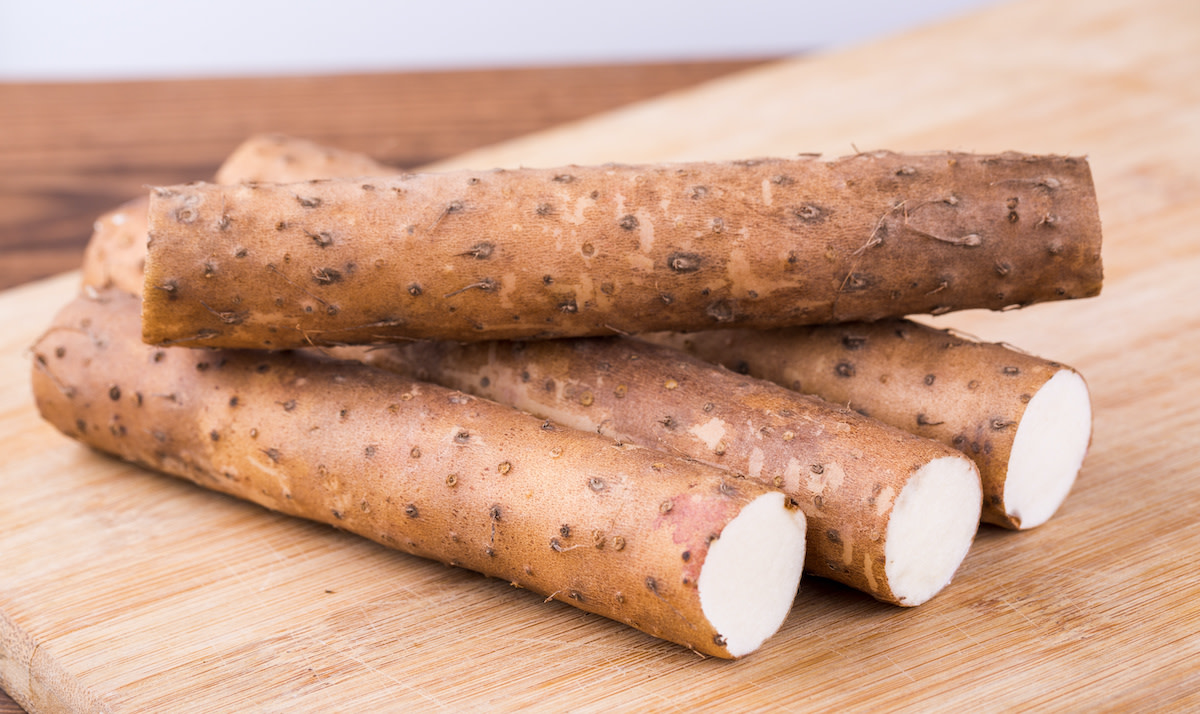Yamaimo: 3 Common Ways to Enjoy Japanese Mountain Yam
Written by MasterClass
Last updated: Jun 7, 2021 • 1 min read
In Japan’s Edo Period, yamaimo was known as “the mountain eel” and considered an aphrodisiac. These days, it’s just the humble Japanese mountain yam—but its culinary tricks are still swoon-worthy.
Learn From the Best
What Is Yamaimo?
Yamaimo, or Japanese mountain yam, is a cultivar of yam from the Dioscoreaceae family. These long, slender yams, recognizable by their dark brown skin, are among the few edible tubers that can be consumed raw—both cassava and taro must be boiled before consumption.
What Does Yamaimo Taste Like?
Yamaimo has a lightly sweet flavor similar to jicama. When grated, yamaimo takes on a sticky, slimy texture, which you can use as a binding agent, serve as a standalone side dish, or a topping for crudité-style salads, soups, noodle dishes, and stir-fries.
That pasty, pulpy stickiness is yamaimo’s calling card; grated nagaimo, or Chinese yam—a close relative also from the Dioscoreaceae family often mistaken for or sold as yamaimo in Asian grocery stores—has a looser, more watery consistency and milder flavor.
3 Common Ways to Enjoy Yamaimo
The beauty of this slippery vegetable is in its versatility: Enjoy yamaimo raw, grated, and sliced, or give it a quick pan-fry for a salty, satisfying snack or appetizer.
- 1. Grated: In Japan, grated yamaimo, called tororo, is widely eaten as a porridge with dashi and sliced green onions. Still, it’s also the secret ingredient for fluffy okonomiyaki (savory Japanese pancake) and karukan, a spongy, cake-like confection from Kyushu. The starch helps bind the batter’s components but is light and silky enough not to turn soggy or heavy when cooked or steamed. Tororo is also a common addition to udon or soba noodles (tororo soba), miso soup, or a garnish on a serving of natto—sticky fermented soybeans.
- 2. Pan-fried or sautéed: Like sweet potato and other similar root vegetables, slices of yamaimo turn soft and creamy when pan-fried in a bit of olive oil to a crisp, golden brown and garnish with shredded nori.
- 3. Raw: Yamaimo is commonly peeled and sliced or julienned into thin strips, and either added to a salad or consumed on its own, seasoned with shōyu (soy sauce) or ponzu.
Want to Learn More About Cooking?
Become a better chef with the MasterClass Annual Membership. Gain access to exclusive video lessons taught by the world’s best, including Niki Nakayama, Gabriela Cámara, Chef Thomas Keller, Yotam Ottolenghi, Dominique Ansel, Gordon Ramsay, Alice Waters, and more.
